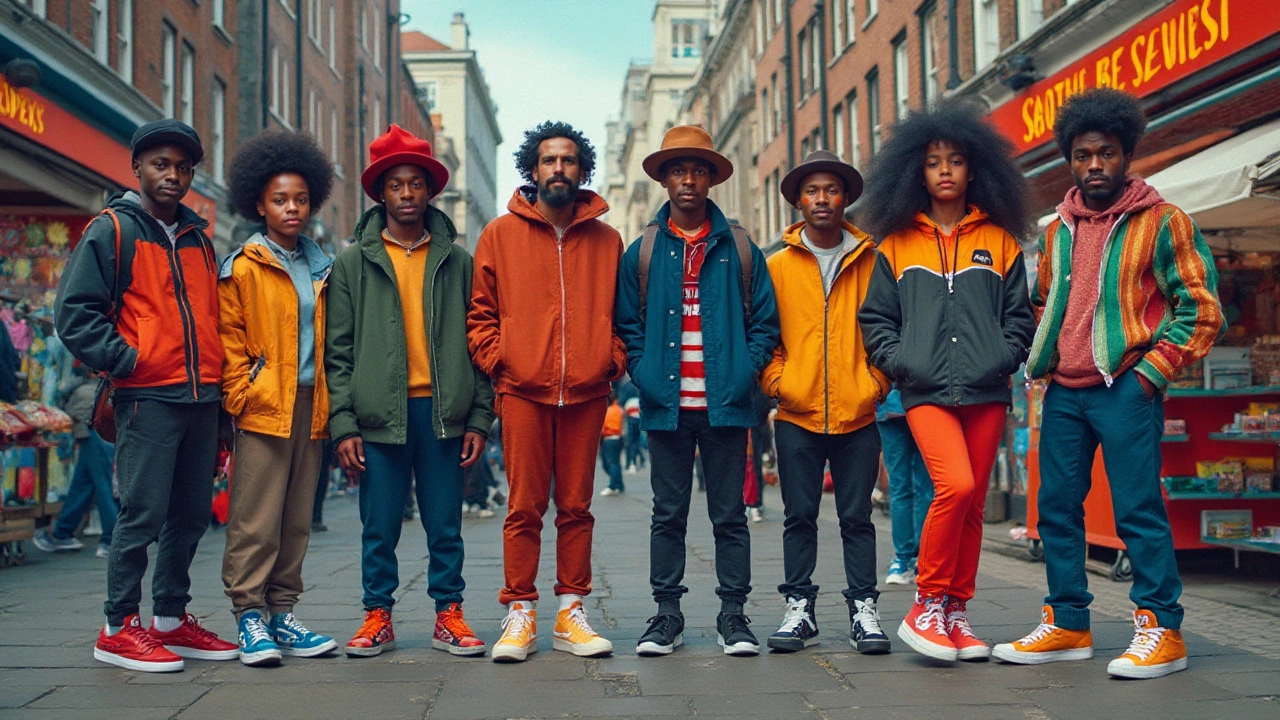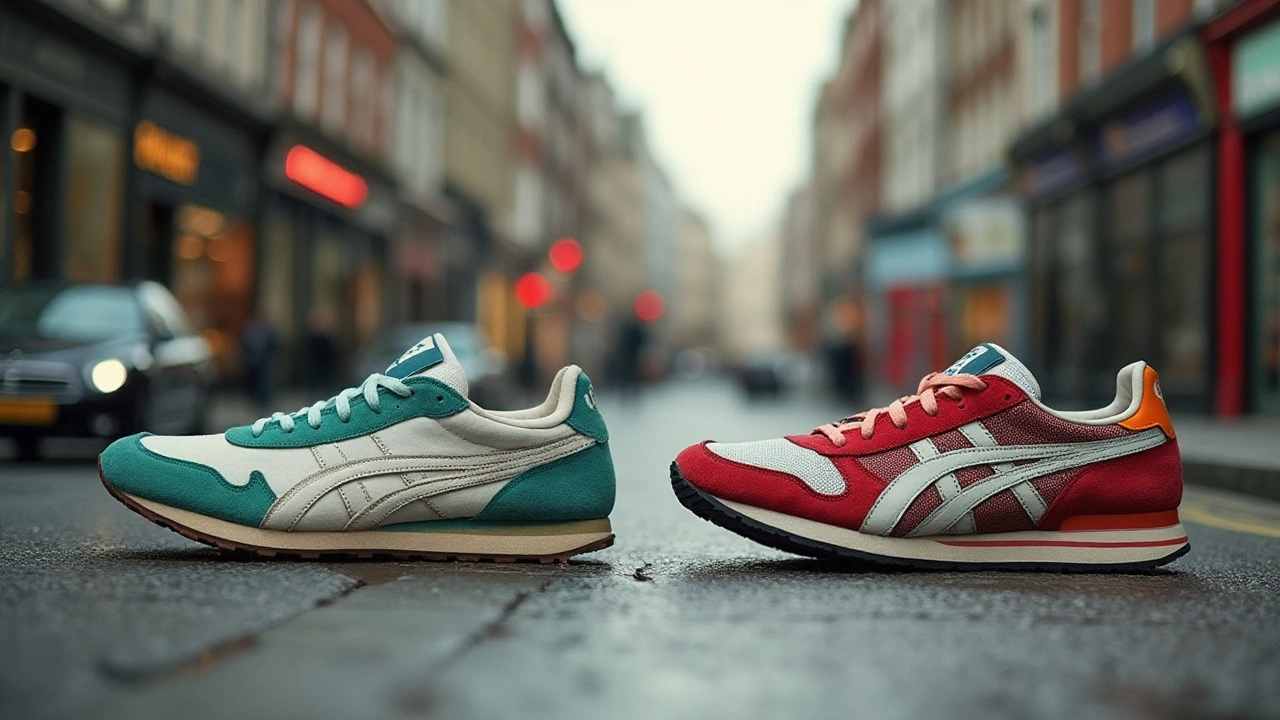Sneakers have experienced a fascinating journey, evolving far beyond their initial purpose as functional athletic gear. Today, they are much more than mere sportswear; they are a dynamic blend of style, comfort, and performance that have captivated people around the globe.
Let’s dive into how sneakers have transcended their utilitarian role to become an essential in both wardrobes and workouts. From their humble beginnings on the sports track to gracing the runways of fashion capitals, sneakers hold a unique place in our lives. So whether you are lacing up for a marathon or just sauntering down the street, understanding the dual role of sneakers will help you choose the right pair for any occasion.
- Historical Roots of Sneakers
- Sneakers in the Sporting World
- The Fashion Evolution
- Cultural Significance
- Technological Advancements
- Choosing the Right Sneakers
Historical Roots of Sneakers
It might come as a surprise to some that the humble sneaker has origins that trace back over 100 years. The very first variant of what we now term as sneakers appeared in the late 19th century. These early athletic shoes were called plimsolls and were quite rudimentary, consisting of a simple canvas upper bonded to a rubber sole. Their design was starkly utilitarian, intended merely to provide basic traction and comfort to those engaging in physical activity. The invention and rise of these shoes were closely tied to the burgeoning interest in leisure time sports and outdoor activities during the Industrial Revolution.
In 1917, the company now known as Converse released its All-Star sneaker, widely considered one of the first mass-produced sneakers. This marked a pivotal moment as sneakers began to gain a foothold beyond their utilitarian functions, infiltrating the domains of culture and fashion. The introduction of this innovative design prompted a surge in popularity among basketball players, including the iconic endorser Chuck Taylor, whose name would forever be linked to the brand. A popular quote from The Sneaker Book by Tom Vanderbilt notes,
"The sneaker is many things: industrial product, fashion item, marketing object, and even political symbol."
By the mid-20th century, sneakers had firmly established their place in the sporting world and were beginning to break into casual fashion. As societies developed post-war, people experienced increased leisure time and disposable incomes, fueling a newfound enthusiasm for recreational sports. Companies like Adidas and Puma emerged as pioneers in athletic shoe technology, setting the stage for sneakers to become indispensable sportswear. Notably, the 1970s marked a golden age for sneakers as running and fitness boomed, catapulting sneaker sales to new heights. During the Olympics, athletes showcased the latest sneaker technologies, captivating audiences and inspiring many to adopt athletic practices into their daily lives.
Today, the historical journey of sneakers continues to influence their role between sport and fashion. The once-niche shoes are now celebrated as icons of popular culture, with numerous limited edition releases and collaborations fueling a thriving sneakerhead community. They are, in every sense, a testament to innovation and aspiration, having gone from necessity to a symbol of lifestyle and identity across the world. Whether intended for the track or the runway, their historical roots remind us of the transformative power of sportswear.
Sneakers in the Sporting World
The story of sneakers in the sporting world is entrenched in a rich history that ties together athletic possibility and innovative design. When the first rubber-soled shoes, known as plimsolls, came into being in the late 19th century, they marked the birth of modern sneakers. These shoes initially catered strictly to the sport of tennis, providing athletes with a silent step that gave them the agility and speed needed on the court. Fast forward to the 1920s, the iconic Converse Chuck Taylor All Star sneaker was born, initially designed for basketball players. The sneaker's appeal soon expanded beyond its original confines, as athletes from various disciplines sought the comfort and grip offered by these revolutionary shoes.
Today, the role of sneakers in sports cannot be overstated. They are essential gear for athletes worldwide, engineered to enhance performance in disciplines ranging from running and basketball to skateboarding and hiking. This evolution reflects decades of technological advancements. Modern sneakers are now designed with specialized soles to optimize different movements and impacts specific to various sports. Materials like breathable mesh and synthetic leather are integrated into the design to offer balance between lightweight comfort and durability. Arguably, sneakers have become instruments capable of minor miracles by enabling peak performance and reducing the risk of injuries commonly associated with sports activities.
Not only do sports sneakers enhance athletic excellence, they also influence sports culture itself. Brands like Nike, Adidas, and Puma invest heavily in collaborations with elite athletes and sports scientists to push the boundaries of sneaker technology. The Nike Air series, introduced in the 1970s, creatively blended cushioning with performance, while more recent innovations like Boost by Adidas focus on energy return with each stride, revolutionizing comfort and performance standards for runners. These technological breakthroughs epitomize the ongoing commitment to improving athletic performance through footwear.
Statistics on sports injuries demonstrate the importance of correctly engineered sneakers in providing support and comfort. It’s reported that approximately 25% of sports injuries, particularly those affecting the knee and ankle, are linked to inadequate or incorrect footwear. Thus, the continuous improvement in sneaker design directly correlates to better safety and performance outcomes for athletes. Amidst this innovation, sneakers have become more than just functional apparel; they are pivotal in not only enhancing athletic potential but also mitigating the risks associated with the intense demands of sports activities.
"The right footwear is critical in enhancing athletic performance while reducing injury risk. Sneakers have evolved from simple shoes to biomechanics masterpieces." - Dr. Lisa Callahan, Sports Medicine Specialist.
Understanding the evolution and relevance of sneakers in sports highlights their indispensable role in any athlete's gear collection. With each technological advancement, from increased ankle support to climate-adaptive materials, it's clear that the value of sneakers in the sporting world will continue to grow. These shoes are emblematic of the spirit of innovation in sportswear, showing how science and sports mesh perfectly together to drive forward the achievements of athletes across the globe.

The Fashion Evolution
The evolution of sneakers into fashion icons is a story woven with threads of innovation, culture, and individual expression. Initially seen solely as practical footwear intended for sports and physical activity, sneakers have seamlessly transitioned into vital fashion accessories. This shift began in earnest in the 1970s when brands started collaborating with celebrities and athletes, setting the stage for sneakers to step off the track and onto the streets. The appeal of sneakers grew exponentially as they became emblematic of youth culture, rebellion, and freedom.
During the 1980s, the increase in hip-hop culture further cemented sneakers as a style statement. Artists across the globe proudly sported their sneakers, often turning rare and unique pairs into must-have collectables. This sneaker fever sparked a thriving subculture that still thrives today. Icons like Run DMC famously proclaimed their love for Adidas in the hit song "My Adidas," showcasing how these shoes were more than just sports gear—they carried cultural weight. In recent years, collaborations between sneaker brands and high-profile designers have blurred the lines between high fashion and athletic wear. Limited-edition releases turn sneaker shopping into an event as enthusiasts line up for a chance to snag exclusive pairs.
"Sneakers are now a key part of the everyday wardrobe, influencing and adapting to trends effortlessly," said Virgil Abloh, noted designer and cultural thinker, reflecting on the shift in the fashion landscape.
With the sudden surge of "athleisure" as a dominant trend, sneakers have found a permanent place in the fashion hierarchy. The fusion of comfort and style makes them an effortless choice not just for casual outfits but also for upscale events. The versatility of sneakers has allowed them to infiltrate workplaces formerly reserved for formal footwear. As fashion becomes increasingly inclusive and gender-neutral, sneakers embolden wearers to customize and express individual styles without constraint. This democratization of fashion offers a refreshing contrast to conventional dress codes.
Many modern sneaker designs pay homage to historic styles while integrating cutting-edge technology, ensuring functionality remains a priority. The blend of vintage aesthetics and contemporary innovations create distinctive pieces that appeal to both nostalgia-seekers and forward-thinkers. Fashion houses, recognizing the cultural clout of sneakers, regularly include them in their collections, paving the way for innovative designs that marry luxury and leisure seamlessly. Whether through bold colors, eclectic designs, or minimalist silhouettes, today’s sneakers offer an array of choices that cater to diverse tastes and occasions.
Moreover, environmental consciousness is weaving its way into sneaker designs, with brands opting for sustainable materials and ethical manufacturing processes. This not only appeals to eco-conscious consumers but also sets a precedent for responsible fashion practices. As the sneakers continue to dominate the runways, streets, and social media feeds, their ability to bridge generations and cultures remains unmatched, proving that these once-humble sports shoes have indeed evolved into a powerful force within the fashion universe.
Cultural Significance
The cultural significance of sneakers is immense, finding roots that spread across various subcultures, countries, and demographics. From their inception, sneakers have been a symbol of both rebellion and acceptance, evolving alongside societal changes. Sneakers first emerged not only as tools for athletic performance but as cultural icons, embodying the spirit of youthful defiance and innovation. The 'Sneakerhead' phenomenon showcases this quite effectively, where enthusiasts meticulously collect and trade rare pairs, treating them as art.
The 1980s was a critical decade for sneakers, especially with the rise of hip-hop culture. Adidas and Puma, among other brands, became intertwined with music and street artistry, heavily influencing their design and marketing strategies. Street dancers and artists brought their own flair into the sneaker world, making them synonymous with self-expression and freedom. Renowned artists and athletes started endorsing particular brands, which added another layer of desirability and status to these shoes.
Fast forward to today, sneakers are no longer confined to the courts or streets; they are seen gracing fashion runways, blending high fashion with everyday apparel. This crossover into mainstream fashion symbolized a broader cultural acceptance and acknowledgment of sneakers as more than just athletic shoes. It wasn’t long before collaborations between designers like Virgil Abloh and brands such as Nike elevated sneakers to high art status. This fusion is aptly captured by fashion critic Suzy Menkes, who said, "Sneakers are the canvas of modern culture."
"Sneakers are the canvas of modern culture." - Suzy Menkes
Sneakers are now widely perceived as staples in everyday fashion, and their cultural influence is palpable in how different communities adopt unique styles and personalize their sneakers to align with their personal narratives. This personalization is not merely aesthetic but embodies individual stories, marking a significant shift in how we perceive and interact with footwear. The digital era has further propelled sneaker culture through social media platforms, where deals are made, and trends are set in real time. Sneakers have become a medium of storytelling and community building, reflecting societal trends and personal experiences.

Technological Advancements
The world of sneakers is continuously being revolutionized by incredible advancements in technology. Gone are the days when athletic shoes were just about providing basic foot protection. Today, innovations are driving the sneaker industry to places unimaginable even a decade ago. This change is largely due to growing consumer demands for performance, comfort, and sustainability. Brands are now investing heavily in research and development to introduce materials and designs that not only enhance athletic performance but also cater to the unique needs of the fashion-forward consumer.
One of the most significant technological advancements in the sneaker industry is the development of new materials. Companies like Nike and Adidas have pioneered the use of lightweight, breathable fabrics that can withstand the rigors of intense activity. For instance, Nike's Flyknit technology offers seamless construction that minimizes waste while maximizing performance. It’s not only lightweight but also durable, marking a giant leap from traditional sneaker fabrics.
Similarly, Adidas' Boost technology has redefined cushioning systems. By using thermo-plastic urethane (TPU), the Boost sneakers provide unparalleled energy return, making them favorites among athletes who aim for peak performance. These changes emphasize how sneakers have evolved to meet the demands of both athletes and casual wearers who value comfort in their daily lives.
"We're not just making sneakers; we're creating a future of efficiency and performance," said Martin Lawrence, Head of Innovation at a leading sneaker brand, highlighting the focal point of current technological ventures.
Another remarkable innovation is 3D printing technology in sneaker manufacturing. Nike's Vapor HyperAgility Cleats, for example, use 3D printing to design cleats with intricate detail that was impossible with traditional methods. This technique allows for customized production that caters to the specific needs of individual athletes. As a result, the fit is better, the weight is reduced, and the performance is enhanced. Such advancements reflect how technology is shaping the future of sportswear, including the beloved sneakers.
More recently, sustainability has become a key component in sneaker technology. Consumers today are not only looking for high-performance sneakers but also responsible manufacturing practices. Brands are responding by incorporating eco-friendly materials such as recycled plastics and organic cotton. Nike's Space Hippie collection and Adidas' Parley line, which uses ocean plastic to make shoe components, are excellent examples of this trend. The emphasis on sustainability underscores the remarkable shift in the industry towards green innovation.
These technological advancements have not only improved sneakers from a functional perspective but also broadened their appeal as a cultural icon. Athletic shoes today are a testament to how innovation in design and material science can meet the evolving tastes and ethics of consumers. As the sneaker industry continues on this exciting trajectory, the possibilities seem endless. Perhaps the sneakers of tomorrow will be even smarter, more adaptable, and continue to bridge the gap between sportswear and fashion in novel ways.
Choosing the Right Sneakers
Finding the perfect sneakers for your needs is like finding a good friend – they should complement your lifestyle, support you when it matters most, and keep you feeling comfortable as you navigate through life. In a market flooded with options, it can be somewhat overwhelming, but understanding what to look for can simplify the hunt. Not all sneakers are created equal, and each pair serves a unique purpose, making it crucial to align your selection with your specific activities and style preferences.
Firstly, identify the primary use of your sneakers. Are you planning to hit the gym, run a marathon, or simply add a stylish touch to your casual outfits? For athletic purposes, different sports require sneakers designed to enhance performance. For instance, running shoes are engineered to provide extra cushioning and support for impact reduction, while basketball shoes emphasize ankle support and traction. If fashion is your goal, then focus on aesthetics and how well the sneakers integrate with your wardrobe. Remember, wearing the wrong type of sneaker during physical activities could lead to discomfort or injuries.
According to podiatrist Dr. Scott Long, "Selecting the appropriate footwear is not just about comfort, but also about preventing long-term foot problems." This highlights the significance of choosing the right pair not just for fashion but for the health of your feet.
When shopping for sneakers, make sure to consider the size and fit, as many people tend to overlook this crucial aspect. Your toes should have enough room, and the heels should not slip. A snug fit ensures better stability and prevents blisters and calluses. Try on sneakers at the end of the day when your feet are a bit swollen, as this will give you an idea of how the sneakers will feel during extensive wear. Additionally, it’s wise to invest in quality brands known for their sportswear technology, ensuring longevity and value for money.
Another important factor is the material of the sneakers. Breathability and flexibility play significant roles in comfort. Look for materials that provide ventilation, especially if you live in warmer climates, to fend off unpleasant odors and bacteria build-up. Sneaker technology has come a long way, with high-tech fabrics offering superior moisture-wicking capabilities and adaptability.
Even maintenance plays a role in keeping your sneakers in top condition. Regular cleaning not only enhances their look but extends their lifespan too. Always check the care instructions specific to the sneakers’ material to avoid accidental damage. By incorporating these approaches, you ensure that your sneakers remain not just a fashion statement, but a functional partner in your daily adventures. As the love affair with sneakers continues to grow globally, selecting the right pair becomes an art and science combined.

